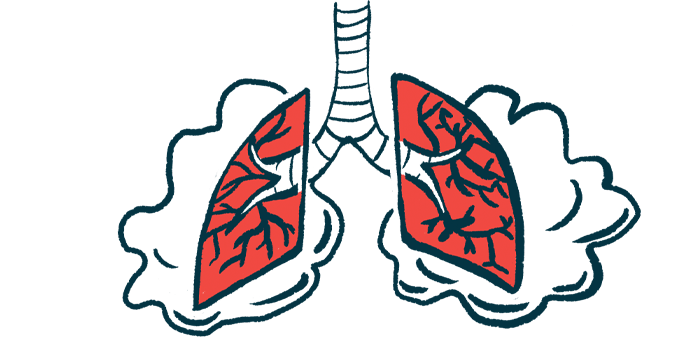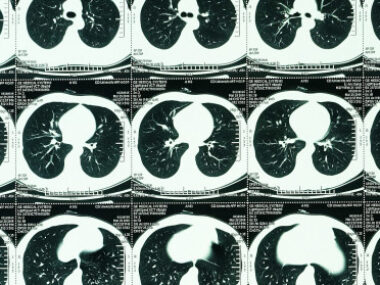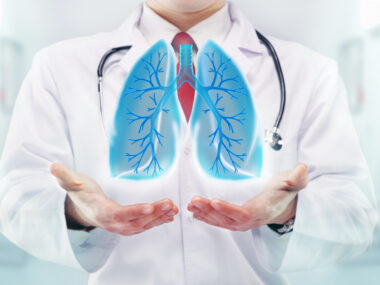In Lung Cancer Patients, COPD Tied to More Surgery Complications
Written by |

Among people with lung cancer who undergo tumor removal surgery, chronic obstructive pulmonary disease (COPD) is linked to a higher rate of postoperative pulmonary complications and longer hospital stays, including a greater need for intensive care unit (ICU) treatment, according to a large retrospective Australian study.
A history of smoking, either past or current, also was associated with more complications following surgery — though researchers said it “remains unclear whether smoking cessation reduces this risk.”
Overall, the findings suggest that tailored treatments for COPD may be most effective in lessening post-surgery complications. Specifically, the researchers noted that “key aims of COPD management include optimisation of function and prevention of exacerbations.”
Titled “Impact of smoking status and chronic obstructive pulmonary disease on pulmonary complications post lung cancer surgery,” the study was published in the journal Plos One.
COPD is present in 50–70% of patients with lung cancer. Several studies suggest that COPD is associated with a higher frequency of postoperative pulmonary complications (PPCs) in patients who undergo surgery to remove a tumor. The same link has been found with being a smoker, either presently or in the past.
Now, a team led by researchers at the Institute for Breathing and Sleep, in Australia, assessed the link between PPCs and pre-operative smoking or COPD in a large group of patients who underwent lung surgery for tumor removal.
A retrospective analysis was done, involving data from lung cancer patients who had surgery between 1995 and 2018 in a cancer center.
In all, the researchers analyzed data from 1,013 patients, with a mean age of 66. Of them, 61% were men. Patients had a mean body mass index (BMI) — a measure of body fat – of 27 kg/m2, consistent with being overweight. Of note, 27 kg is equal to about 60 lbs.
Patients who had smoked tobacco in the 12 months leading up to surgery were defined as current smokers, while those who had ceased smoking for at least a year were defined as ex-smokers.
In total, 362 of the patients (36%) were ex-smokers, 314 (31%) were current smokers, and 111 (11%) never smoked. The smoking status was unknown for 226 patients (22%). These individuals were excluded from the analysis of how smoking might impact PPCs.
The ex-smokers were significantly older than never smokers (69 vs. 63 years).
A pre-operative COPD diagnosis was made in 20% of never smokers, 57% of current smokers, and 57% of ex-smokers. COPD in never smokers was mild to moderately severe.
A lobectomy — a surgical procedure in which an entire section (lobe) of the lung is removed — was performed in 900 patients (89%). The remaining 113 patients (11%) underwent pneumonectomy, a surgical procedure to remove the whole lung.
A small fraction of patients (6%) received neoadjuvant radiotherapy or chemotherapy. This is a treatment given before surgery with the goal of shrinking tumors and helping to improve surgical outcomes.
The majority of patients (82%) were diagnosed with non-small cell lung cancer (NSCLC). Around half of them (51%) had adenocarcinoma, a type of NSCLC in which tumor cells are those that produce and release substances like mucus, while 28% had squamous cell carcinoma (SCC). In this case, tumor cells arise in cells lining the inside of the lung airways.
About a quarter of patients (26%) experienced a PPC, with 71 patients having more than one.
The most common PPC was air leak (12%), then pneumonia (7%). Those were followed by the collapse of part or the entire lung, a condition called atelectasis (4%), as well as sputum retention (4%), and respiratory failure (4%). In a few rare cases, patients experienced empyema — a buildup of pus in the cavity between the lung and the membrane that surrounds it — or acute respiratory distress syndrome (ARDS). Those conditions each affected 1% of patients.
Current smokers had a higher frequency of PPCs than never smokers (27% vs. 17%), a statistically significant difference. No difference was seen between current and ex-smokers or between never- and ex-smokers.
Patients diagnosed with COPD, regardless of smoking status, had a higher frequency of PPCs (59.7%) and pulmonary complications (65.4%) compared with those without COPD (40.3% and 34.6%).
Sputum retention (77.3% vs 22.7%), respiratory failure (77.8% vs 22.2%) and air leak (66.1% vs 33.9%) were more common in COPD patients than in those without the disease.
COPD also was linked to a longer hospital stay (mean of 10.3 vs. 9.0 days) and longer stays in ICU. Complication rates did not differ between current and never smokers with COPD, except for air leak that was more common in current smokers.
Sputum retention was more common in current smokers than in ex-smokers with COPD (63.0% vs. 37.0%).
Overall, these findings suggest that “smoking and COPD are both associated with a higher rate of PPCs post lung cancer resection,” the researchers wrote.
“COPD, independent of smoking status, is also associated with an increased overall post-operative complication rate and length of hospital stay,” they wrote.
“An emphasis on COPD treatment optimisation, rather than smoking cessation in isolation, may help improve post-operative outcomes,” they concluded.






